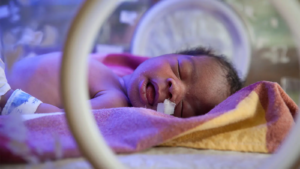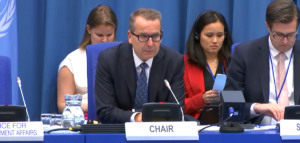Of all the major cancers diagnosed in the U.S., the skin cancer melanoma has one of the highest survival rates.
But all melanoma diagnoses aren’t created equal. Survival rates vary widely by race, as shown by research published in the Journal of the American Academy of Dermatology today (July 11). Black men diagnosed with melanoma have about a 26% higher risk of dying than white men with the cancer, according to the study.
Catastrophic Flooding Swamps Vermont Forcing Rescues and Evacuations
Posted 16 Hours Ago
The study focused specifically on men with melanoma, who have been shown to have lower chances of surviving than women with the disease. Researchers analyzed data from more than 205,000 U.S. men diagnosed with melanoma from 2004 to 2018, in what co-author Dr. Ashley Wysong, chair of the University of Nebraska Medical Center’s dermatology department, says she believes is the largest published study of melanoma in U.S. men.
Almost 98% of the men included in the study were white, but men of color in the group had markedly lower chances of living five years or longer after their diagnoses. Among Black men, the five-year overall survival rate was roughly 52%—meaning that, within five years of their diagnoses, these men had a 48% chance of dying from any cause, including but not limited to melanoma. That’s significantly lower than the 75% five-year overall survival rate recorded among white men in the study. American Indian/Alaska Native, Asian, and Hispanic men in the study all had five-year overall survival rates between about 66% and 69%.
One explanation for that disparity is that men of color tend to be diagnosed with melanoma later than white men. “The further along it is…the poorer overall survival is, in general,” Wysong says.
Almost half of Black patients in the study had advanced-stage melanoma by the time it was detected by a doctor, compared to about a fifth of white patients. That tracks with national statistics. Melanoma is much more common among white adults, but research suggests Black adults are more likely to be diagnosed with late-stage disease.
Studies suggest that’s true for multiple reasons, including inadequate access to healthcare and lower perceived risk of skin cancer among people or color. There is also insufficient training for physicians about how to spot cancers on non-white skin. In general, men tend to visit dermatologists less frequently and receive skin cancer diagnoses later than women, which likely contributes to the gender disparity in survival rates, Wysong says.
But, Wysong says, she and her colleagues found Black men had poorer survival outcomes even after accounting for factors like timing of diagnosis, location of the cancer, insurance status, and overall health. That means “there are lots of factors we are not accounting for that we absolutely need to understand better,” Wysong says. Since the study looked at overall survival rates, not melanoma-specific survival rates, other medical conditions or socioeconomic factors may also affect longevity, she says.
More research is needed to determine exactly why melanoma survival varies by gender and race. In the meantime, Wysong says everyone should educate themselves about what melanoma looks like, both on the skin and in harder-to-see locations like under the nails or on the eye. “Watch for anything new, growing, changing, bleeding, not healing, not part of your normal skin” and consult a dermatologist if you notice something concerning, Wysong says.
Since “sun exposure is the biggest modifiable risk factor” for developing melanoma, it’s also important to seek shade and limit time spent in the sun, particularly at midday when its rays are strongest; use protective clothing, hats, and sunglasses; and wear sunscreen of at least SPF 30 on any skin that’s exposed when you’re outdoors, Wysong says.
That advice goes for everyone. Research suggests sunscreen use is more common among people with fairer skin, but the American Academy of Dermatology recommends that people of all genders, ages, and racial groups wear sunscreen on any day they will be outside.




